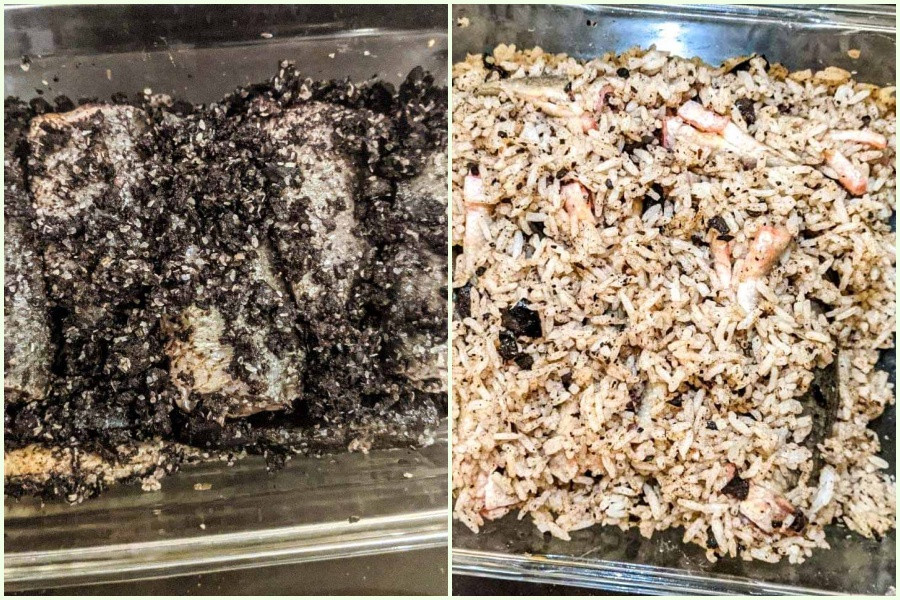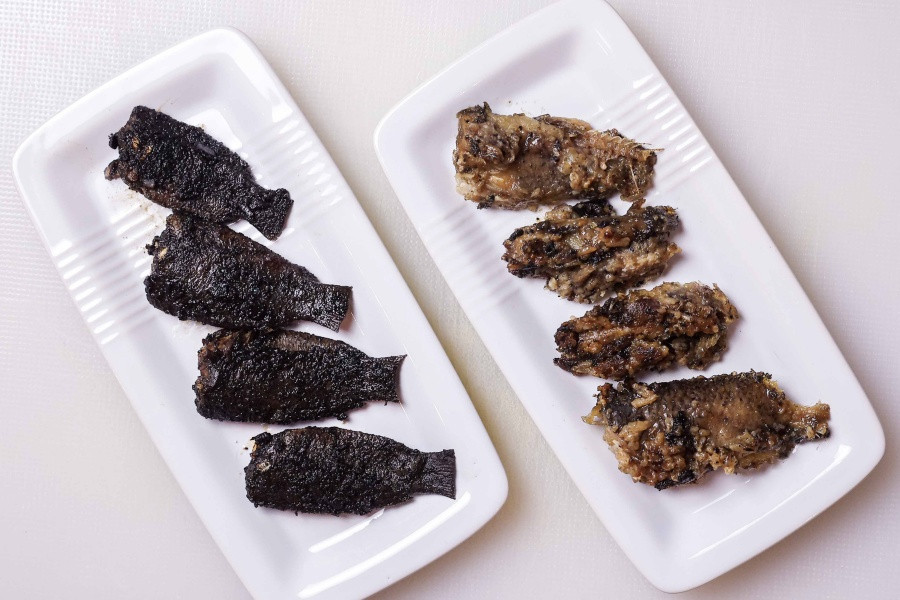The 101: Fermentation with pangi seeds
by Pison Jaujip23 Apr 2021
Pangi seeds aka buah keluak are a popular ingredient used to ferment foods in Kadazandusun cuisine. Here’s an overview of two fermentation methods using the seed.
Pickled and fermented foods are a major part of the Kadazandusun diet. Anything that is edible can be preserved for months, even years. There are many ways that Kadazandusun people preserve food and one of them is using pangi seeds (pangium edule) also known as buah keluak or kepayang.
Pangi seeds are toxic when consumed raw. But the Kadazandusun love the taste of the seeds so much that they’ve found a way to remove its poison by fermenting it with food. Pangi seeds naturally taste bitter but become nutty and delicious—like peanuts—after fermentation. They also help in reducing the strong pungent smell in fermented foods.
There are two ways to ferment food using pangi seeds. The first is pinongian and the second is bosou aka daat, sinamu, nonsom and many other names in different districts in Sabah.
The pinongian method is usually used to ferment wild meat such as wild boar and river fish by mixing chopped or powdered pangi seeds with salt. Pinongian is safe to eat after seven days of fermentation. It is usually not eaten raw but fried with oil then mixed with calamansi juice and chopped chillies. Good pinongian will not have a pungent smell of rotten meat or fish. Instead, it should smell like, well, pangi seeds, which is to say salty and nutty. Also, the texture of meat or fish after fermentation should be firm rather than mushy. Pinongian will last up to a month and beyond before the texture of the meat or fish becomes mushy.
Meanwhile, the bosou method is similar to pinongian except that it has an extra ingredient added: cooked rice. Bosou takes on a sour taste because of the rice. Similar to pinongian, bosou is suitable for fermenting wild meat, river fish, and fresh vegetables such as bamboo shoot, jackfruit, tuhau, bunga kantan, and papaya.
Vegetable bosou is safe to eat raw after seven days of fermentation. Meanwhile, for fish bosou, it can take around three weeks to a month for the fermentation process so that the fish bones soften and can be eaten raw. But wild boar bosou should be cooked first before eating to safely eliminate bacteria. Fresh ginger, chillies, onion, and other ingredients can be added to bosou to boost the flavours.
Bosou can last up to a year or more depending on how it is stored. The smell of bosou varies depending on the type of ingredients fermented. Compared to pinongian, the smell of bosou is quite pungent and the Kadazandusun people find that very appetising.
Learn how to make pinongian sada and bosou sada.
***
Pison Jaujip is the founder of Ropuhan Di Tanak Wagu, a popular Facebook page that documents Kadazandusun recipes.
Read next
Bosou sada
Fermented fish in all its pungency

Pinongian sada
A Kadazandusun fermented fish project

The 101: How to prepare keluak
Cleaning keluak for safe consumption






